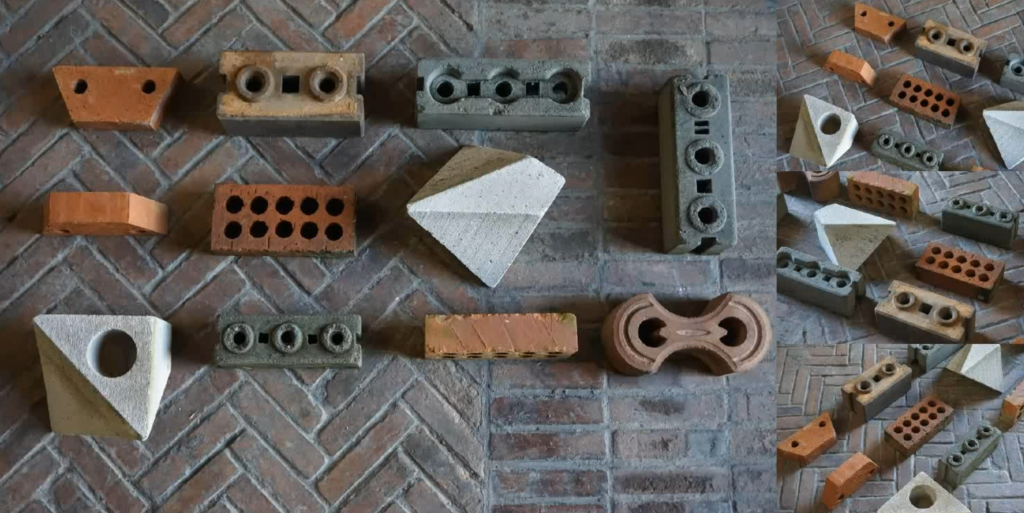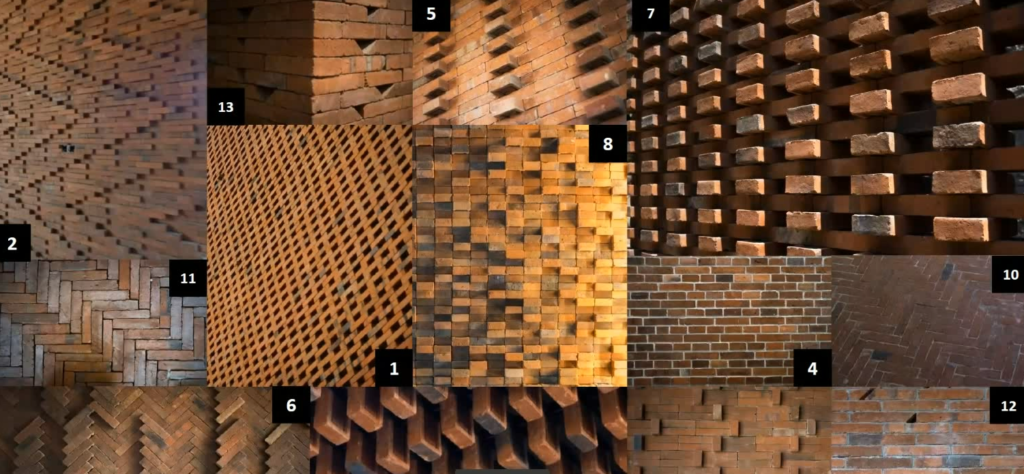Reliving history through craftsmanship

Custom bricks developed by andyrahman architects and their craftspeople. All images screenshotted from the About Making: Tradition discussion
Making is inseparable from the makers—and those who dig deep into cultural history will be able to make sense of why materials are used the way they are, as well as what to further create with them.
This was among the ideas discussed in About Making: Tradition, an online dialogue held on 14 March 2022 about the role and influence of tradition in contemporary craft and architecture. The session was moderated by Stephen Knott and hosted by Eleena Jamil.

From left to right, clockwise: Stephen Knott; Martina Margetts; Andy Rahman
Martina Margetts, Senior Tutor in Critical & Historical Studies at the Royal College of Art, has long studied the distinctive identities of various cultures within the region. “South-East Asia is only static on the map,” she said. She presented a research project in Thailand, Vietnam and Myanmar that focuses on traditional adaptations of textiles and how it can inform other crafts. By looking at these interconnections, contemporary craft could seek to imbue three things—wisdom, values and sustainability.
“There was a tremendous synergy between the idea of clothing for our body and architecture that surrounds us,” Margetts remarked. The knowledge of craft that appeared within textile communities could also inform solutions to the challenges of craft that arose in living spaces.

Brick configurations at the old temples of Sumur and Pari 
Brick configurations in Omah Boto by andyrahman architects
Andy Rahman, the principal of andyrahman architects, lives close to a surviving piece of history: the ancient Majapahit-era stone temples in Trowulan, East Java such as Brahu Temple, Wringin Lawang Temple, Sumur Temple and Pari Temple which were all made out of brick. Andy’s studio has been researching the temples’ brick architecture since 2014, cataloguing their sizes and configurations.
The research is implemented in the project Omah Boto, which uses locally made bricks in various arrangements that breathe character into the different spaces. For example, the prayer room is enveloped by a porous screen that becomes a marker of time, since prayer times are an important part of Islamic practice. Other areas in the house use various patterns inspired by batik motifs.
In addition to exploring local bricks, the studio also develops custom types of brick, such as laterite brick which is made from an infertile type of soil, and oval-shaped non-burned bricks. This development was done together with the craftsmen. Andy summed it up: “Our craftsmen are positioned as partners, not subordinates. Craftsmanship is signified by a commitment to do something as best [as one can]. It means the craftsmanship is not limited to handwork … craftsmanship should be understood as attitude, a way of thinking, fully including our hands and hearts in our labour.”

